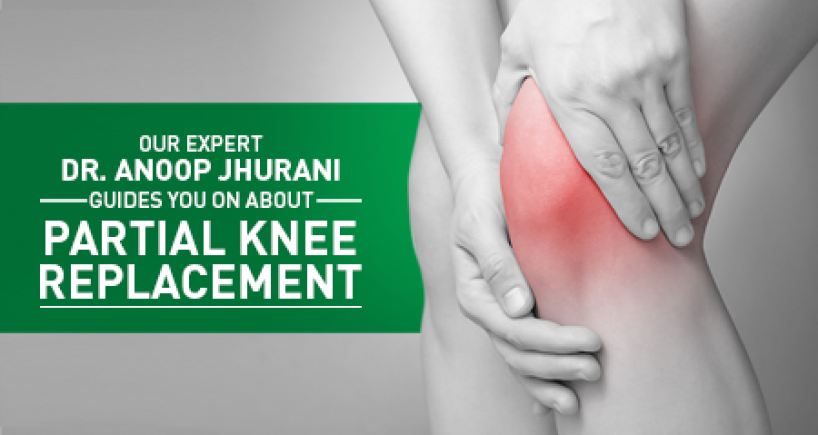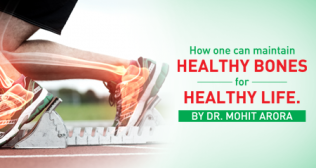
Partial Knee Replacement: A Boon For Early Arthritis

Arthritis affects knees of more than 5% of the population in India with over 1/4th of the patients under the age of 55. In begins on the inner or medial side of the knee, causing uncomfortable movement and eventually leading to complete restriction in knee movement.
Osteoarthritis
Joints are formed by the ends of two or more bones connected by tissue called cartilage. Healthy cartilage serves as a protective cushion, allowing smooth and low-friction movement of the joint. If the cartilage becomes damaged by disease or injury, the tissues around the joint become inflamed, causing pain. With time, the cartilage wears away, allowing the rough edges of bone to rub against each other, causing more pain. This stage is called osteoarthritis, which is normally known as the wear and tear disease of joints.
Conservative Treatment
In almost 35% of the cases of knee arthritis, only one-third portion of knee needs to be replaced. However, so far the only treatment that science could offer them besides exercise and medicine is a total knee replacement. In total knee replacement, the whole cap of femur bone and top of leg bone are replaced which covers the whole of the damaged surfaces of the knee joint to relieve pain and disability and correct mal-alignment of knee-joint.
Advanced treatment: Unicompartmental or partial knee replacement
When there is a severally damaged osteoarthritis knee, the joint completely degenerates; the total knee-replacement surgery is the preferred procedure. However, for those patients whose only one third knee is affected by arthritis, a partial knee replacement may just be enough. In this surgery, all four ligaments are preserved, unlike total knee replacement where two major inner ligaments are sacrificed.
Our knee is divided into three major compartments: The medial compartment (the inside part of the knee), the lateral compartment (the outside part) and the patellofemoral compartment (the front of the knee between the kneecap and thigh bone). In a unicompartmental knee replacement, only the damaged compartment is replaced with metal and plastic. The natural healthy cartilage, the ligaments and bone in the rest of the knee is left as it is.
Improved patient experience
Also, because the natural bone, cartilage and ligaments in the healthy parts of the knee are kept, most patients report that a unicompartmental knee replacement feels more ‘natural’ and also bends better than a total knee replacement. It is a revolutionary technique of replacement that not only provides increased range of motion but also preserves bone and retains all four natural ligaments of the knee. Therefore this has led to increasing satisfaction amongst patients who can now enjoy daily routine activities and feel normal again. It is especially a boon for young patients as they can go back to their active lifestyle without restrictions and after minimal hospitalization. The patients could cycle, jog, exercise, swim and enjoy all physical activities to give maximum satisfaction and a pleasure to operated patients.
Categories
Clear allਡਾਕਟਰ ਨੂੰ ਮਿਲੋ

- Orthopaedics | Orthopaedics
-
25 Years
-
1500



















